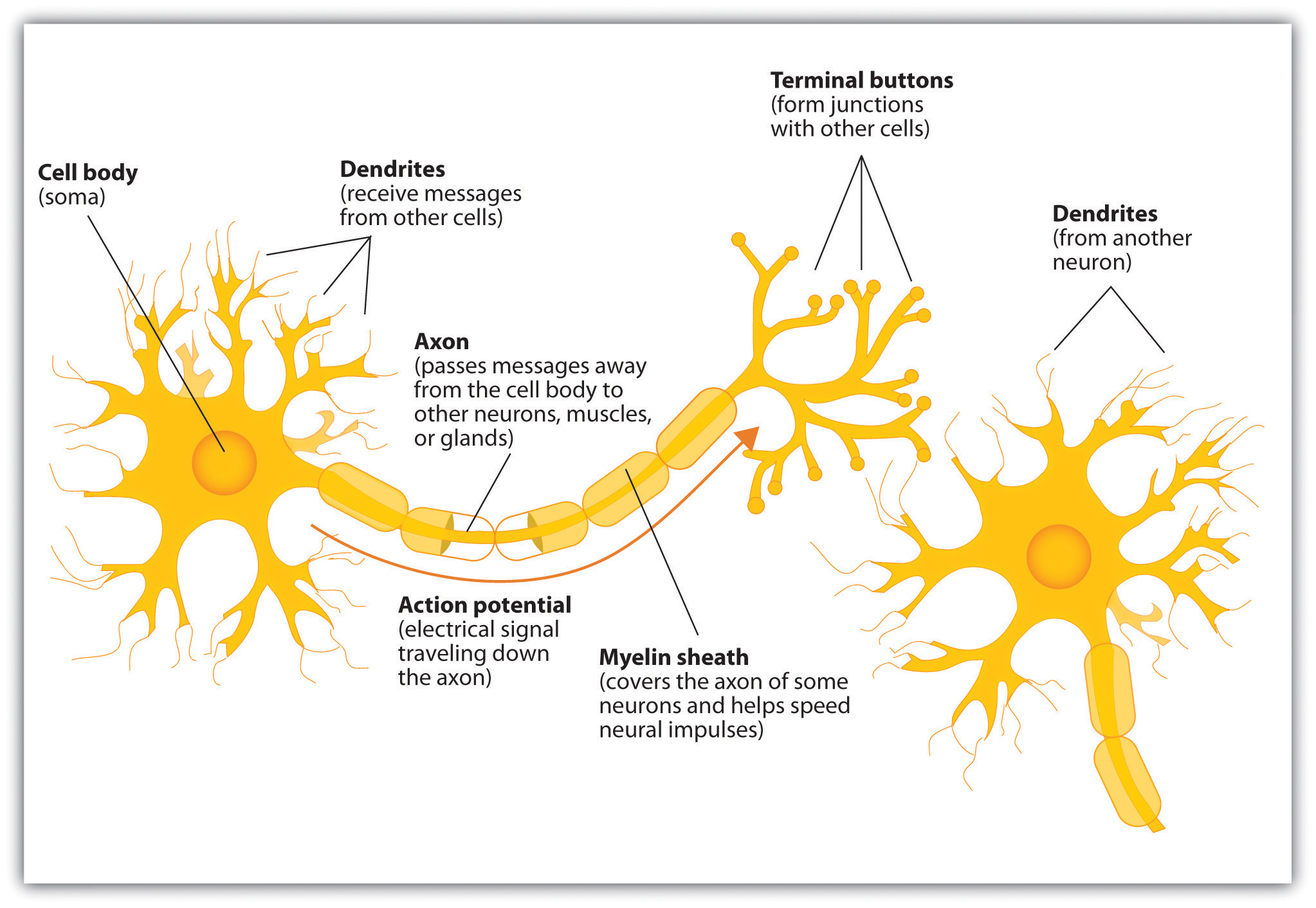
The Neuron Is the Building Block of the Nervous System USE ME
While they have the common features of a typical cell, they are structurally and functionally unique from other cells in many ways. All neurons have three main parts: 1) dendrites , 2) cell body or soma, and 3) axons. Besides the three major parts, there is the presence of axon terminal and synapse at the end of the neuron.
:max_bytes(150000):strip_icc()/neuron-anatomy-58530ffe3df78ce2c34a7350.jpg)
Neuron Anatomy, Nerve Impulses, and Classifications
Simplified diagram of neural circuits involved in the knee-jerk reflex. When the patellar tendon is tapped, the quadriceps muscle on the front of the thigh is stretched, activating a sensory neuron that wraps around a muscle cell. The sensory neuron's axon extends all the way into the spinal cord, where it synapses on two targets:

Health Lab 4.1 Introduction
Diagram Of Neuron. A neuron is a specialized cell, primarily involved in transmitting information through electrical and chemical signals. They are found in the brain, spinal cord and the peripheral nerves. A neuron is also known as the nerve cell. The structure of a neuron varies with their shape and size and it mainly depends upon their.

What Is the Connection between Stress and the Nervous System?
In the neuron drawing shown below, the neuron is labeled to show structures such as the cell body, axons, dendrites, and synapses. A detailed diagram of a neuron, showing the synapse, cell body.
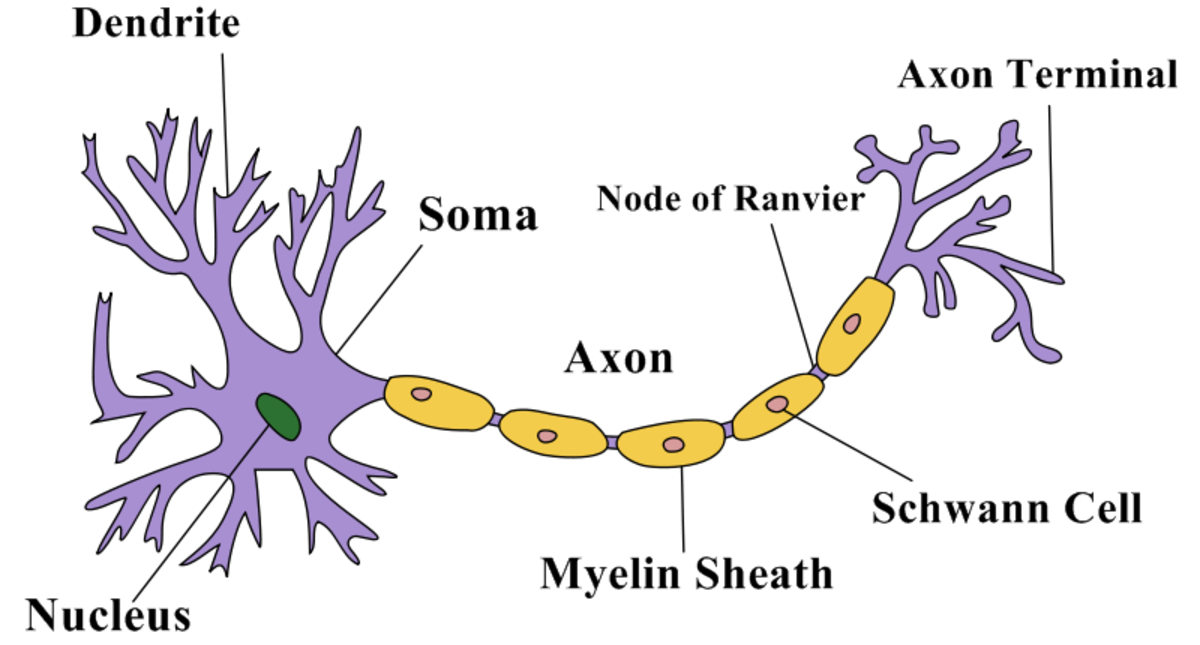
Structure of a Neuron Owlcation
3. How to Draw a Neuron Diagram To learn about the structure of the neurons, the students can use a neuron labeled diagram. The students may follow these steps to make their neuron diagram, but the process is complex: 3.1 How to Draw a Neuron Diagram from Sketch Step 1: First, the students need to draw a circle. Based on it, they need to draw a.
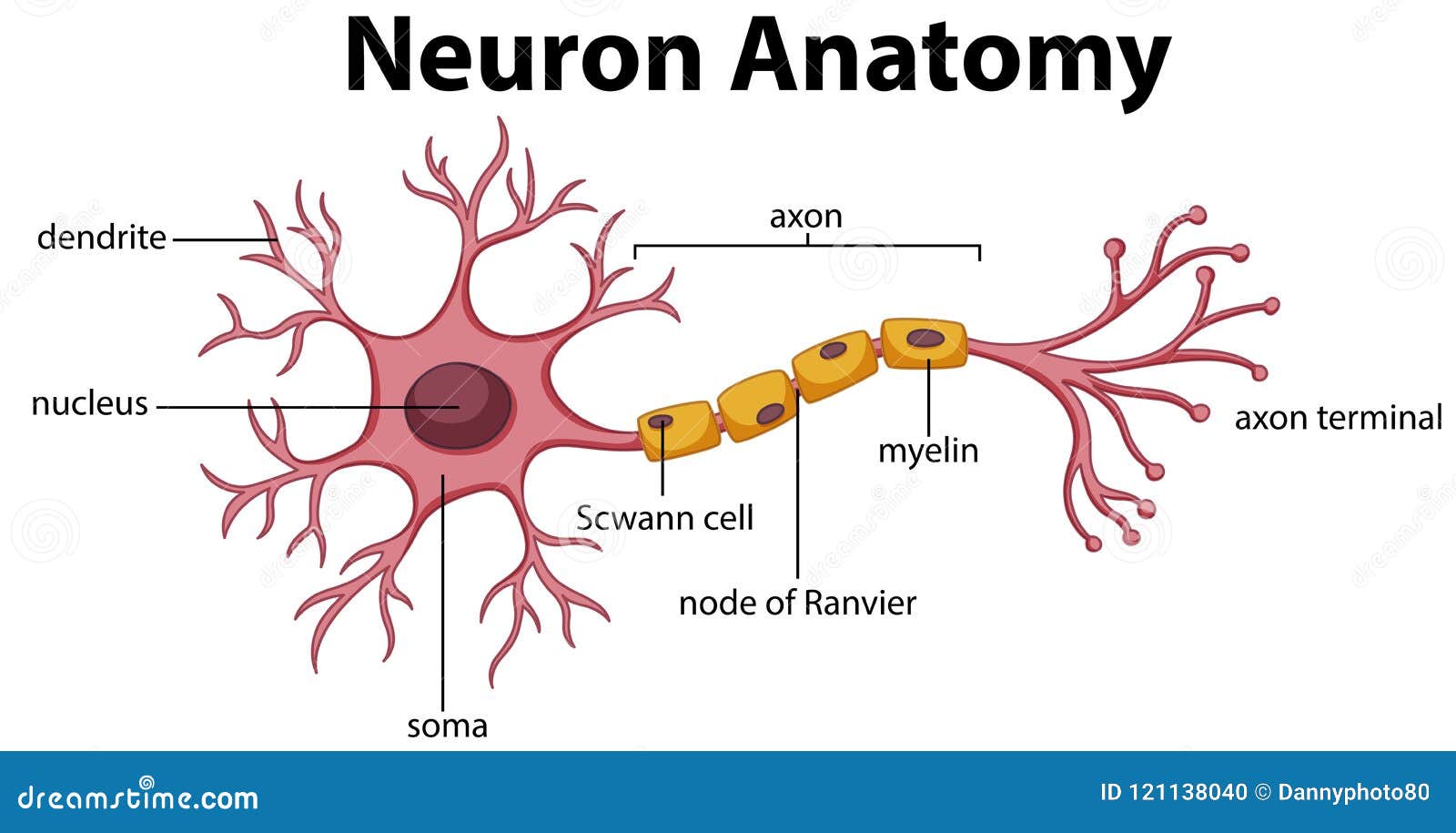
Neuron Diagram Labeled Human Anatomy
Cerebellum - molecular, Purkinje, granular layers. Peripheral nerves - epineurium, perineurium, endoneurium. This article will explain the histology of neurons, providing you with information about their structure, types, and clinical relevance. It will also cover briefly the histological layers of the central and peripheral nervous systems.
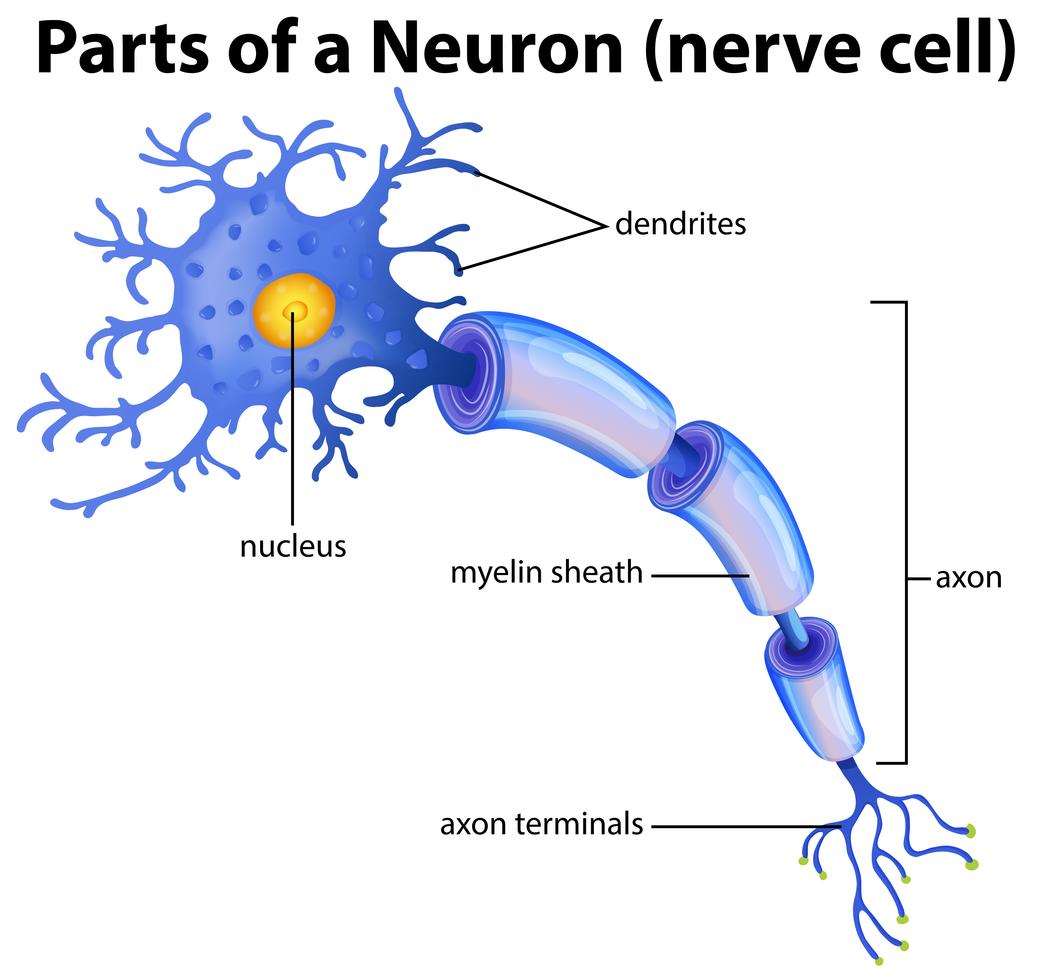
Part of a Neuron Diagram 299698 Vector Art at Vecteezy
neuron, basic cell of the nervous system in vertebrates and most invertebrates from the level of the cnidarians (e.g., corals, jellyfish) upward.A typical neuron has a cell body containing a nucleus and two or more long fibres. Impulses are carried along one or more of these fibres, called dendrites, to the cell body; in higher nervous systems, only one fibre, the axon, carries the impulse.

FileNeuron1.jpg Wikimedia Commons
Neurons, or nerve cell, are the main structural and functional units of the nervous system. Every neuron consists of a body (soma) and a number of processes (neurites). The nerve cell body contains the cellular organelles and is where neural impulses ( action potentials) are generated. The processes stem from the body, they connect neurons with.
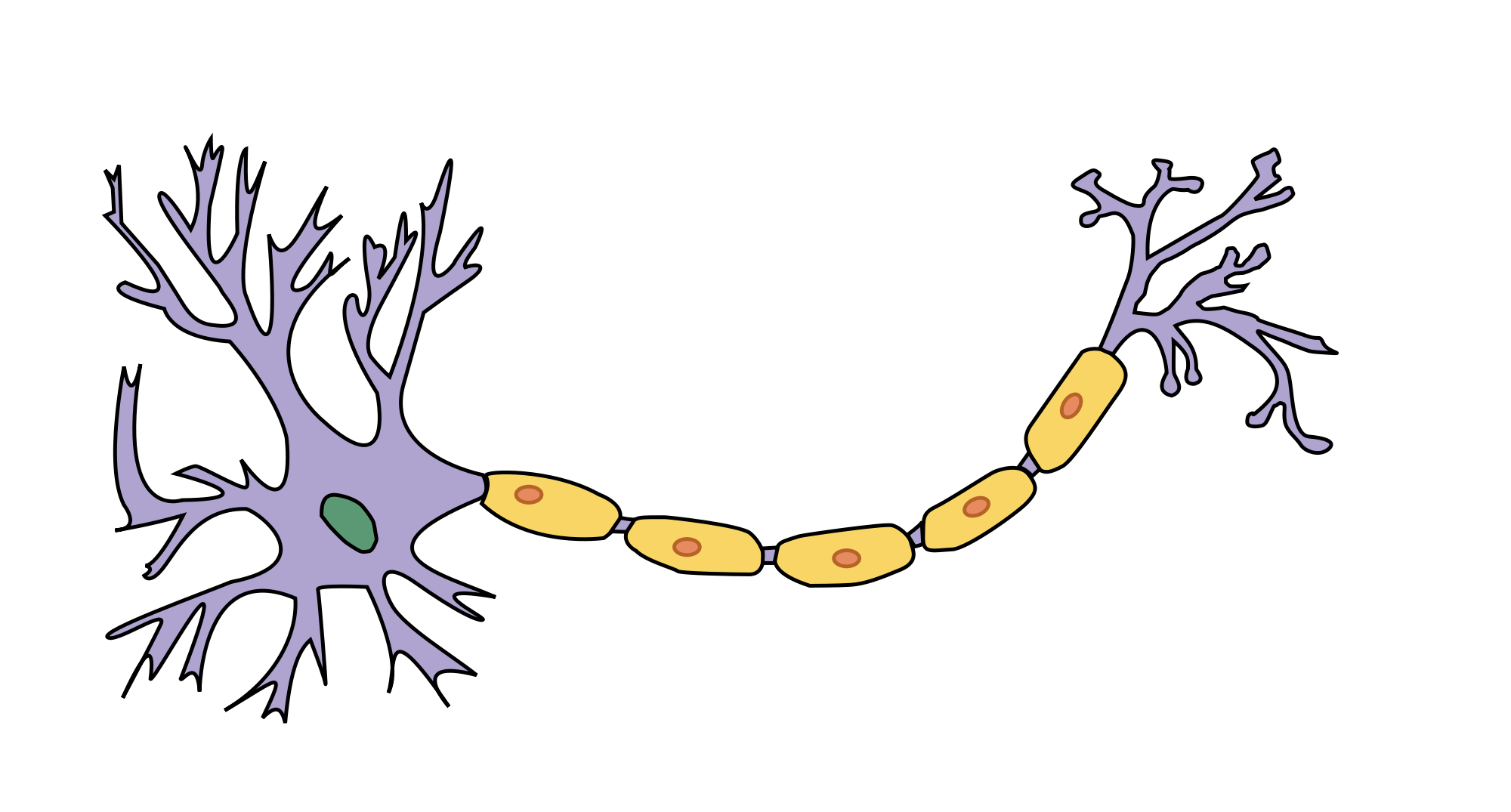
A Unlabelled Neuron ClipArt Best
Choose the correct names for the parts of the neuron. (6) This neuron part receives messages from other neurons. (7) This neuron part sends on messages to other neurons. (8) This neuron part gives messages to muscle tissue. (9) This neuron part processes incoming messages. (10) This neuron part contains instructions for making proteins that the.
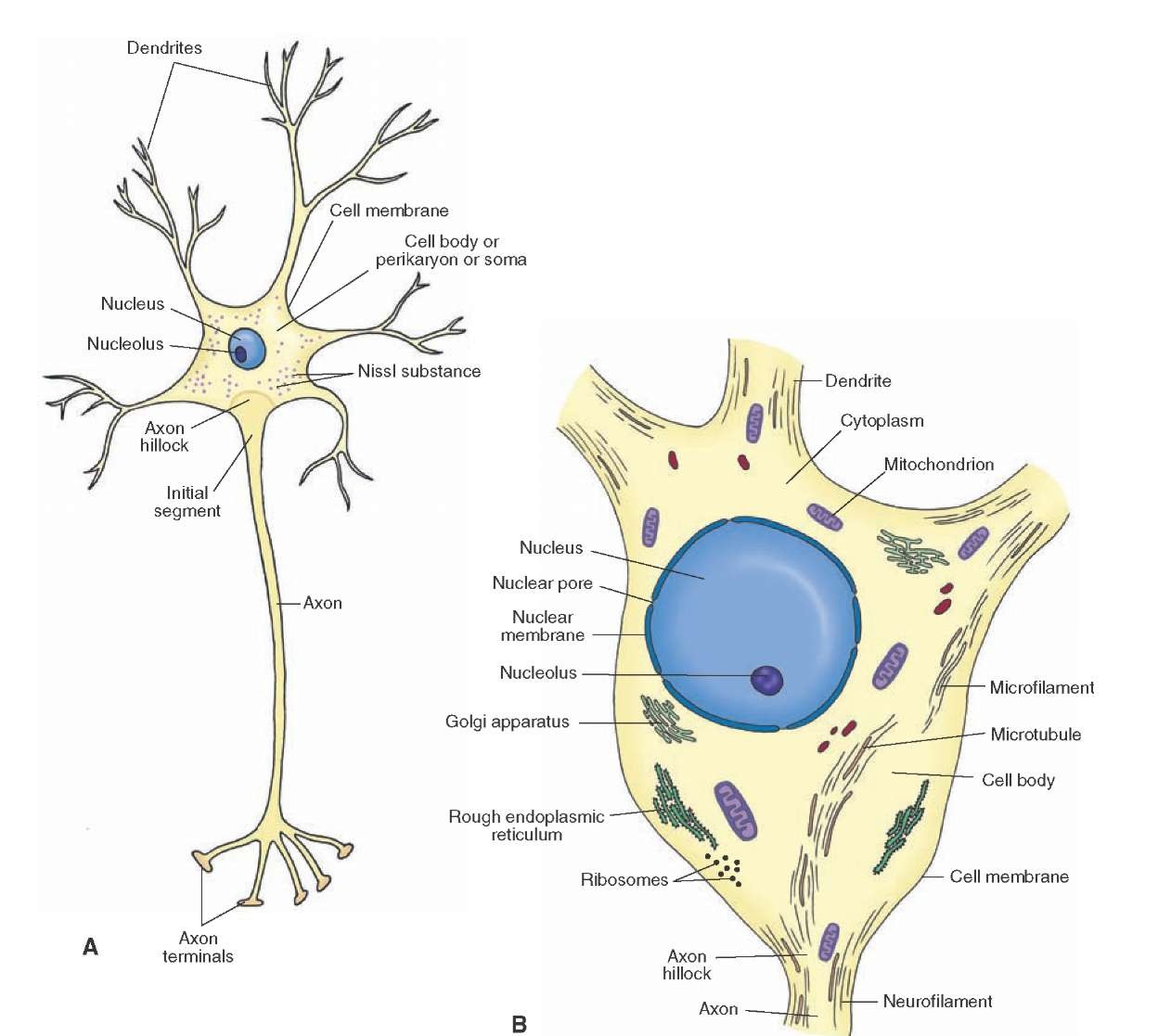
Histology of the Nervous System (The Neuron) Part 1
Neurotransmitters. The chemical signals that neurons use to communicate with other neurons and cells. It is the chemical involved in impulse transmission. Neuron transportation. Neurons generally transport signals in one direction from the dendrites, through the soma, along the axon and unto the terminal buttons. Term.
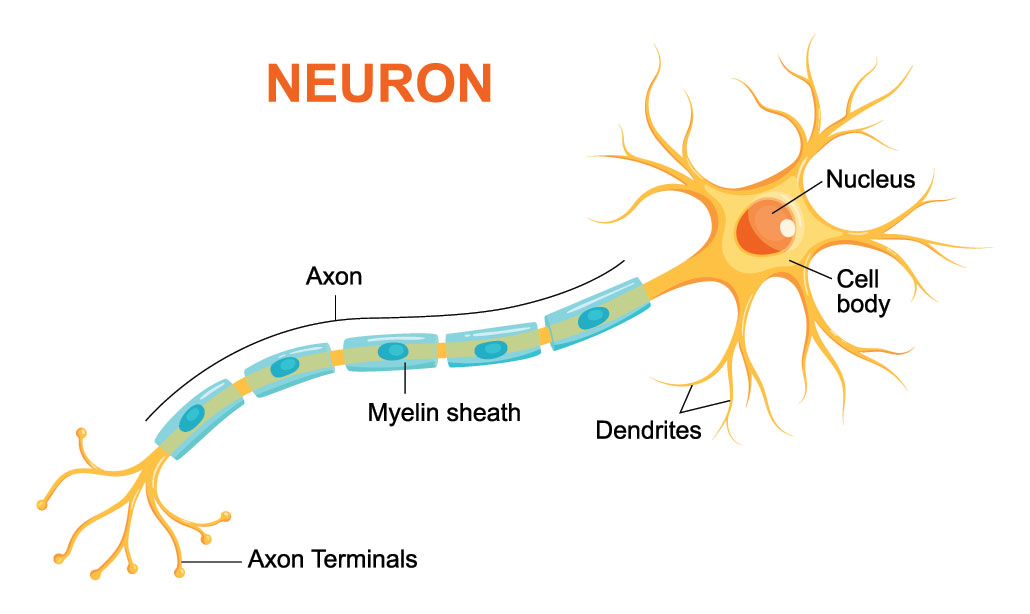
Explainer What is a neuron? Science News for Students
The cell body of a neuron, also known as the soma, is typically located at the center of the dendritic tree in multipolar neurons.It is spherical or polygonal in shape and relatively small, making up one-tenth of the total cell volume.. The functionality of the neuron is highly dependent on its cell body as it houses the nucleus, which contains the genetic material (DNA) of the cell as well as.

Neuron Diagram Straight from a Scientist
Nervous tissue is composed of two types of cells, neurons and glial cells. Neurons are the primary type of cell that most anyone associates with the nervous system. They are responsible for the computation and communication that the nervous system provides. They are electrically active and release chemical signals to target cells.
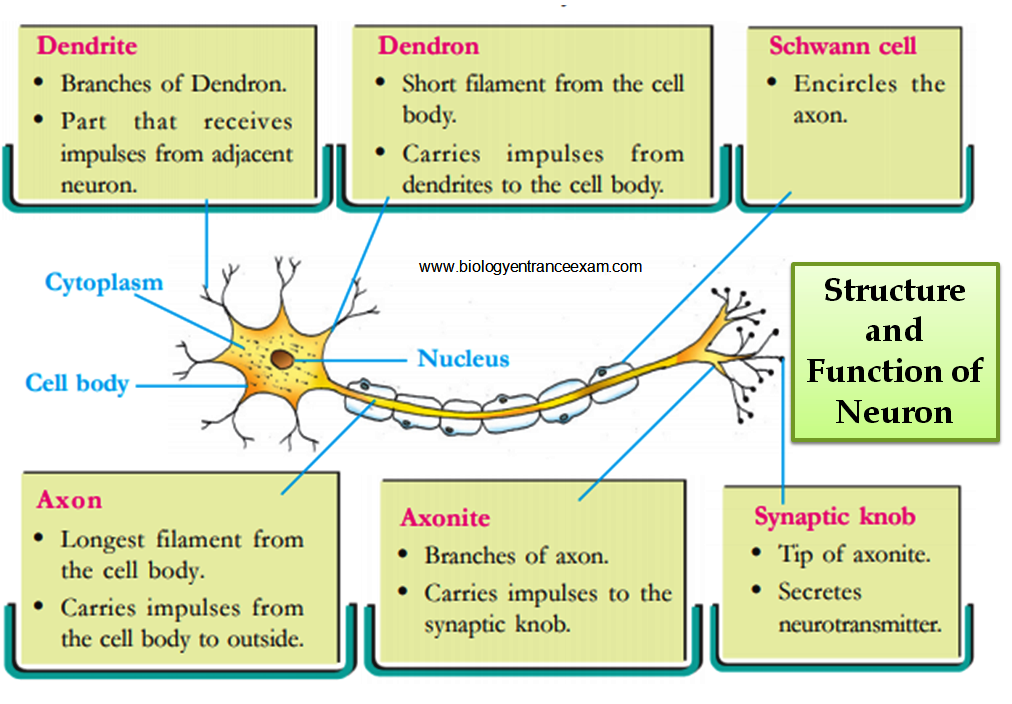
Structure and Function of Neuron
Neuron Anatomy. Nerve Cell: Dendrites receive messages from other neurons. The message then moves through the axon to the other end of the neuron, then to the tips of the axon and then into the space between neurons. From there the message can move to the next neuron. Neurons pass messages to each other using a special type of electrical signal.

Labeled Neuron Diagram EdrawMax Template
Anatomy and histology Diagram of the components of a neuron. Neurons are highly specialized for the processing and transmission of cellular signals. Given their diversity of functions performed in different parts of the nervous system, there is a wide variety in their shape, size, and electrochemical properties.

related keywords suggestions for neurons structure and Neuronas, Khan
There are three main types of neurons: Motor neurons make the connection between the brain and muscles throughout the body. These neurons transmit electrical impulses containing information to skeletal muscles and smooth muscles. Motor neurons control all of our body movement. Sensory neurons are neurons that let us feel sensation.

Neurons The crazy wires in our body. Doc Jana
Anatomy of a neuron. Overview of neuron structure and function. The membrane potential.. neurotransmitter can also be "mopped up" by nearby glial cells—not shown in the diagram below. Reuptake by the presynaptic neuron, enzymatic degradation, and diffusion away from the synapse reduce neurotransmitter levels, terminating the signal.